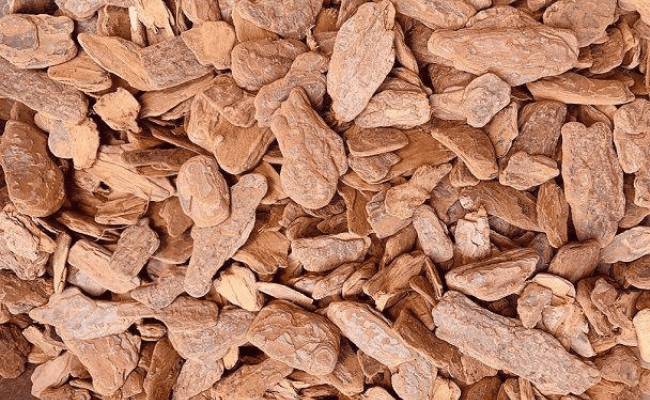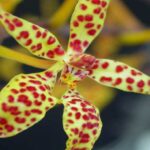If you grow orchids, you know the importance of choosing a good soil for them.
An orchid planted with the correct materials can:
- More health
- More energy
- More flowers
So, keep reading, because in this article I will teach you in a simple but at the same time detailed way how you can choose the best potting mixes / soil for YOUR orchid.
Learn How to Achieve Super Blooms on Your Orchids
🛑 If you love orchids and you're tired of not being able to make them bloom...
Then, know that thousands of beginner growers are achieving beautiful flowers on their orchids by following this method.
Click the button below to have beautiful orchids with show-worthy flowers every year. ⤵
Do All Orchids Need Potting Mixes?
I chose to start with this topic because it is a very common mistake to think that all orchids need potting mixes.
Pay very close attention to the 2 points below
First: Orchids planted in pots need potting mixes, but orchids planted on trees have a lesser need for potting mixes. Usually, a bit of sphagnum moss is added in the beginning to help them attach to the tree.
Second: Some epiphytic orchids, like those from the Vanda genus, do not need substrates. They prefer to be planted hanging, with their roots free.
How to Choose a Good Soil
In the past, there was a material called tree fern fiber (xaxim in Portuguese). It was taken from a very common tree in the Atlantic Rainforest and, for a long time, it was considered the ideal soil for orchids.
You just had to place the tree fern fiber and that was it.
So Studies Begin Looking for Xaxim Replacements
At first, the idea was that tree fern fiber would be the ideal substitute, but it wasn’t.
Several studies were conducted with numerous different potting mixes.
But, none alone had the same advantages as Tree Fern Fiber.
The ideal is to make a soil mix. In other words, you mix more than one material so that, by combining the advantages of each one, you can offer what your orchid needs.
What Should a Potting Mix Offer to the Orchid?
Simply put, it should complement your cultivation, depending on your species and your climate.
That is:
- If you grow in a more humid place, your soil should retain little moisture
- If you grow in a drier place, your soil should retain more moisture
Of course, always taking into account the characteristics of your orchid, whether it likes a lot or a little humidity.
There are other important characteristics you should look at as well:
- Be easy to find and cheap
- Not contain tannin (if it does, you can remove it with the video I left below)
- Have weight to support the plant in the pot
- Have good durability
- Provide nutrients for the plant
Remember that you will hardly find a potting mix with all these characteristics, which is why the potting mix is so important.
Get to Know the Best Potting Mixes for Your Orchids
There are hundreds of different potting mixes that you can use for your orchids.
Below are some of the most famous ones, along with their advantages and disadvantages, so you can choose the best one for your orchid.
NOTE: features like being light or heavy, absorbing a lot or a little water will be placed in the advantages section (because, depending on your climate and the other potting mixes used, these characteristics can be an advantage or a disadvantage)
Crushed Stone or Perlite
Advantages: Heavy (holds the plant in the pot), very high durability (you’ll hardly need to replace it), aids orchid rooting.
Disadvantages: Retains mineral salts from fertilizers (which can burn your orchid’s roots), does not provide nutrients for the orchid.
Pine Bark
Advantages: Retains fertilizer, retains moisture, aids root aeration.
Disadvantages: Contains tannin, decomposes quickly (on average 2 years).
When using pine bark, make sure it’s of medium size (at least 1cm²), because if it’s too small, it can hinder root aeration.
Do You Want to Learn How To Keep Your Orchids Healthy And Ready to Bloom Every Year?
So, I prepared a complete guide, step by step and illustrated, that will show you:
• The secrets to getting beautiful flowers every year
• How to fight and identify pests and diseases on your orchids
• THE MAGIC SUBSTANCE for orchids and how to use it
• And much, much more.
The great news is that the manual is now available at a super discount!!
But beware, it's only for the first buyers.
Click on MORE INFORMATION below and discover the secrets to show-worthy flowers. 👇
Charcoal
Advantages: Lightweight, prevents slugs and snails, natural bactericide, dries quickly, lasts 3 years.
Disadvantages: Accumulates a lot of mineral salts (which can burn your orchid’s roots).
Styrofoam
Advantages: Very light, absorbs little water, provides good aeration for orchids, and has a long lifespan.
Disadvantages: Does not provide nutrients for orchids.
Many growers like to use Styrofoam in combination with crushed granite.
Sphagnum Moss
Advantages: High moisture and nutrient retention, helps fix orchids on trees, medium durability (2 to 4 years, depending on quality), excellent for small seedlings.
Disadvantages: When old, it compacts a lot, which hinders root aeration. You need to be careful to buy only from reliable suppliers (because in some places the collection of sphagnum moss is prohibited by IBAMA).
How to Prepare a Potting Mix
To prepare a soil mixture for orchids, you will need the following materials:
- The potting mixes chosen to use on your orchid
- A container to mix the substrates
- A pair of gloves
Instructions:
- Clean and sterilize all your potting mixes. This can be done by soaking them in a bleach solution for 30 minutes and then rinsing them thoroughly with water.
- Mix the substrates in the container in the correct proportions. This will depend on the type of your orchid and your climate. For example, if you live in a humid climate, you may want to use less sphagnum moss and more crushed granite.
Conclusion
These are some of the most famous substrates; now it’s up to you to choose which ones adapt best to your region and make a mix.
A tip is to use crushed granite at the bottom of the pot; this will help anchor your orchid and aid in pot drainage.

The potting mixes mentioned above are just a few examples you can use.
In addition to these, there are also several other options such as:
- Peroba Bark: Provides excellent drainage and aeration, being durable and resistant to decomposition, ideal for orchids that need a well-drained environment.
- Coconut Fiber: Highly absorbent, retains moisture for a longer time, also promoting good aeration. It is a renewable and sustainable substrate.
- Coconut Husk: Similar to coconut fiber, but in a more compact structure, it offers excellent moisture retention and aeration, in addition to being resistant to decomposition.
- Açaí Pit: Porous, provides good aeration and drainage. It is an organic material, light and with potential to add nutrients to the substrate as it decomposes.
- Ceramic Shards: Promote exceptional drainage and prevent substrate compaction, facilitating root aeration.
- Carbonized Rice Husk: Light and porous, improves drainage and aeration, in addition to retaining a moderate amount of moisture. Helps prevent the growth of fungi and bacteria.
- Peat: Excellent moisture retention capacity, ideal for keeping the substrate moist. Should be used with caution due to its acidity and potential for compaction.
- Slate Stone: Improves the drainage and aeration of the substrate. Its inert nature offers stability and durability to the substrate.
- Coffee Husk: Rich in nutrients, promotes moisture retention and aeration, in addition to being an organic material that adds organic matter to the substrate as it decomposes.
- Vermiculite: High water and nutrient retention capacity, releasing them slowly to the roots. Ideal for maintaining moisture in substrates for orchids.
- Perlite: Expanded volcanic material that promotes excellent aeration and drainage, preventing substrate compaction. Light and porous, it is ideal for orchid substrate mixes.
Have you made your mix? Then comment below how it’s done; I’m very curious to know. If you have any questions, also comment below, and I’ll be very happy to help you.
And, if you want to learn more about orchid cultivation, check out the articles below:
- Orchid Flower Spike – To Cut or Not to Cut?
- Cymbidium (Boat Orchid) Care: A Step-by-Step Guide
- Oncidium (Dancing-lady Orchid) – How to Care in 9 Steps
- Orchid Care for Beginners: Quick and Easy 7-Step Guide
- Monkey Face Orchid – Photos, Curiosities and Much More
- Ludisia the Jewel Orchid – How to Care in 7 Simple Steps
Until next time 😀



















